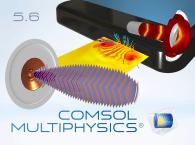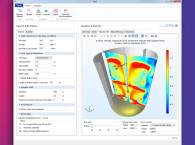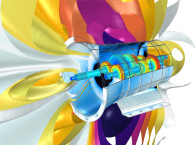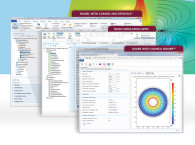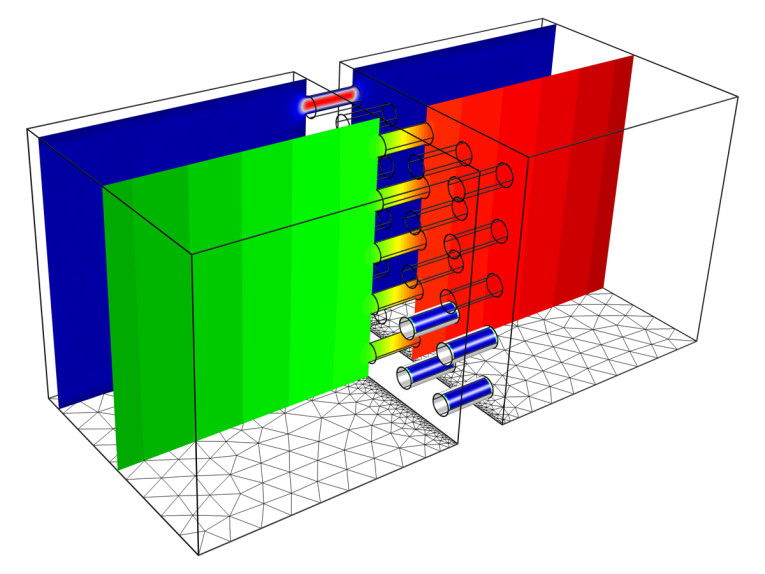
In COMSOL Multiphysics 5.2a, three new solvers deliver faster and more memory efficient computations. The smoothed aggregation algebraic multigrid (SA-AMG) solver has proven to be particularly efficient for linear elastic analysis, but is also applicable to many other types of analyses. This solver is very memory conservative, making it possible to run structural assemblies with millions of degrees of freedom on a standard desktop or laptop computer.
The domain decomposition solver has been optimized for handling large multiphysics models. “The domain decomposition solver provides simulation specialists with a robust and flexible technology to more efficiently compute strongly-coupled multiphysics applications which previously required a memory-hungry direct solver,” says Jacob Ystrom, Technical Manager of the numerical analysis department at COMSOL. “Using this solver, customers will benefit from improved efficiency when running on single computers, clusters, as well as when combined with other solvers such as the aggregation algebraic multigrid solver.”
A new explicit solver based on the discontinuous Galerkin (DG) method for acoustics in the time-domain is now available. “Combing the discontinuous Galerkin method with the new absorbing layers in the time-domain, results in a level of memory efficiency that will allow our customers to perform more realistic simulations than ever possible before, for a given memory size” says Mads Jensen, Technical Product Manager, Acoustics.

The complete suite of computational tools provided by COMSOL Multiphysics software and its Application Builder allows simulation specialists to design and optimize their products and create apps for the benefit of colleagues and customers. Simulation apps allow users without any previous experience using simulation software to run the apps for their specific purpose. With version 5.2a, app designers can build even more dynamic apps where the appearance of the user interface can change during run time, centralize unit handling to better serve teams working across different countries, and include hyperlinks and videos.
Apps can be deployed throughout organizations using the COMSOL Client for Windows or web browser by connecting to a COMSOL Server installation. This provides a cost-effective solution for managing how apps are used, either by users within an organization or to an organization’s clients and customers worldwide. In this latest version, administrators can customize the visual appearance and style of COMSOL Server software for branding purposes, and set the number of prelaunched applications for high-usage cases.
Version 5.2a delivers user-driven, new and enhanced functionality from core technology to specialized boundary conditions and material libraries. For example, the tetrahedral meshing algorithm with an included state-of-the-art quality optimization algorithm has made it easier than ever to create coarse meshes used for the preliminary study of complicated CAD geometries that feature many thin parts. Visualizations now include annotations with LaTeX formatting, improved table surface plots, VTK export, and new color tables.
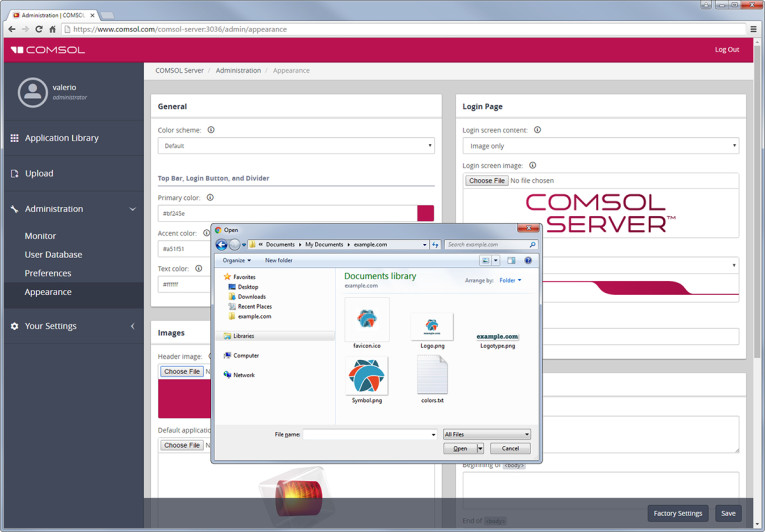
Magnetic vector hysteresis for the modeling of transformers and ferromagnetic material is introduced. Domain terminal boundary conditions for easier simulation of touch-screens and MEMS devices are now available. Ray tracing simulations can combine graded index and constant index materials in meshed and unmeshed domains. The new Optical Aberration plot type is dedicated to measuring monochromatic aberrations. Two-port-networks, fast-frequency sweeps, and nonlinear frequency-mixing are available for high-frequency electromagnetics analysis.
Design and manufacturing engineers working across all industries will benefit from the new adhesion and decohesion feature as they analyze various processes involving mechanical contact with parts sticking together and pulling apart. A new physics interface for modeling linear and nonlinear magnetostriction is also available. Heat transfer users can now access a meteorological database from 6000 weather stations and model fluid, solid, or porous media thin structures.
Users modeling fluid flow with buoyancy will appreciate the new gravity property for density variations, which simplifies the set up of natural convection applications where density may vary depending on temperature, salinity, or other variables. Pipe flow simulations can now benefit from the advanced pump curves.
For chemical simulations, surface reaction in reactive pellet beds and a new reacting flow multiphysics interface are available. Battery manufacturers and designers can now model complex 3D assemblies in battery packs using the new single particle battery interface. Discharge and recharge behaviors are supplied by the single particle model at every point in the geometry. This makes it possible to estimate the geometrical current density distribution and the local state of charge in the battery pack.
The appearance of the user interface of simulation apps can change during run time. Centralized unit handling to better serve teams working across different countries is supported. Hyperlinks and videos can now be included. A new Add Multiphysics window makes it easier for users to create multiphysics models incrementally by providing a list of available predefined multiphysics couplings for the selected physics interfaces. Autocomplete has been expanded to many fields including the equation view fields.
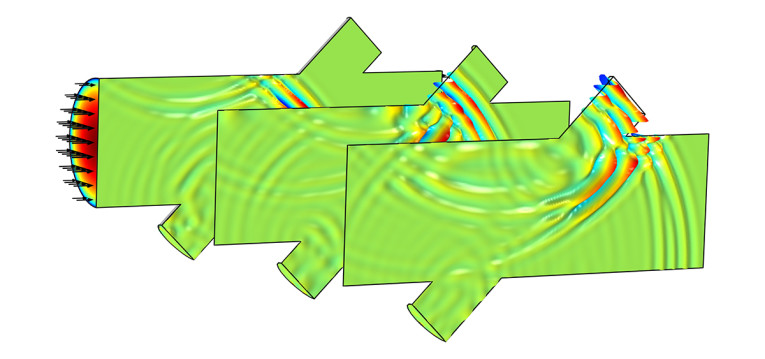
Geometry and Mesh: The enhanced tetrahedral meshing algorithm can now easily create coarse meshes for complicated CAD geometries that feature many thin parts. A new optimization algorithm built into the mesher is available for improving element quality, which may improve the accuracy of a solution and make it faster to converge. Interactive drawing for 2D geometries now features better coordinate display and snapping points.
Mathematical Modeling Tools, Studies, and Visualization: Three new solvers are introduced: the smoothed aggregation algebraic multigrid method (SA-AMG), the domain decomposition solver, and the discontinuous Galerkin (DG) method. Users can now save data and plots added to the Export node under Results in VTK format, making it possible to import COMSOL simulation results and meshes to 3rd party software.
Electrical: The AC/DC Module now features a material model for magnetic hysteresis built-in called Jiles-Atherton. The new lumped two-port network coupling is introduced in the RF Module, allowing for lumped modeling to represent parts of a microwave circuit in a simplified way without having to model the details.
www.comsol.com/release/5.2a



